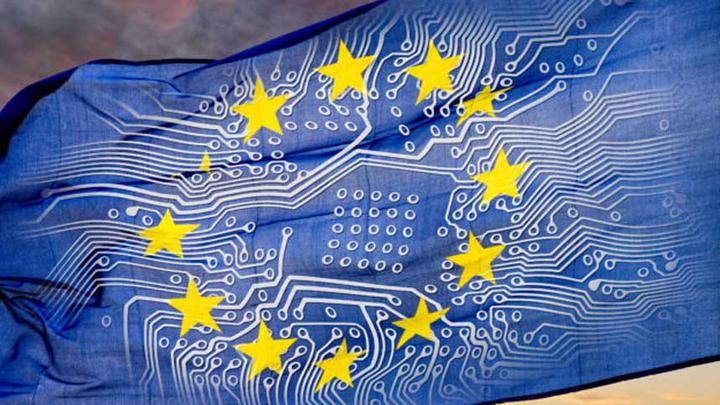
First Financial News, the European Commission, the European Council and the European Parliament announced on Tuesday (18th) that they have reached a consensus on the content of a 43 billion euros (about 47 billion U.S. dollars) "EU chip law", which is short of the formal passage. Just the last step.
The "EU Chip Act" was proposed by the European Commission last year to promote semiconductor production in the EU in a manner similar to the "U.S. Chip Act". The goal is to double the global share of EU chip production to 20% by 2030. Currently, about 10% of the world's chips are produced by the EU.
Expert: Europe has already lost at the starting line
Industry experts analyzed that although Tuesday's statement showed that the European Union is ready to join the global chip race, it may soon find itself behind. While the bill has been described as "landmark" by EU officials, the reality is that Europe is already lagging behind its main rivals and faces many hurdles ahead, experts say.
Jan-Peter Kleinhans, senior fellow and director of the technology and geopolitics program at the Berlin-based think tank New Responsibility Foundation, said the worst that could happen to the European semiconductor ecosystem is that "everyone taps each other on the shoulder and says we Did a great job (passing the bill) and moved on to the next topic."
Kleinhans believes that EU and national strategies must go beyond merely giving those high-end chip factories a "green light" to apply for subsidies. "Building a few more chip factories in Europe is not a strategy," he said. "What we need is an actual semiconductor strategy and a real implementation of that strategy, for example, with resources within the member states and within the European Commission to think about the challenges ahead." .”
American and European industry experts said that compared with the United States, much of the work of the EU chip bill has to be done within each country, such as approving factory construction and providing infrastructure such as roads, water and energy network connections. There is also the challenge of providing adequate access to the talent these programs are intended to attract.
Previously, the progress of related plans has not been smooth: STMicroelectronics and GlobalFoundarie have announced plans to build a factory in the south of France, but this has sparked protests over the facility's water consumption.
Kleinhans said challenges related to the EU chip bill also included a "growing disconnect" between the US and the EU in the process of converting rhetoric into action.
"The U.S. Department of Commerce employs more than 100 people just to implement the U.S. Chip Act," he said. “There will be a lot of resources and a lot of expertise within the U.S. government to assess semiconductor projects, to assess dependencies, to assess bottlenecks, and I don’t think the same will happen in Europe.”
U.S. Secretary of Commerce: 200 U.S. companies have submitted subsidy applications
U.S. Commerce Secretary Gina Raimondo said in an interview with U.S. media last week that more than 200 U.S. companies from various industries have applied for subsidy projects funded by the Chip Act.
The newly established Chip Project Office (CHIPSProgramOffice, referred to as CPO) of the US Department of Commerce will review these applications, and qualified companies will receive relevant subsidies.
According to the CPO's latest statement, all subsidy applications and pre-applications will be assessed against six key criteria: economic and national security objectives; commercial viability; financial strength; technical feasibility and readiness; workforce development; and overall impact of the project .
CPO staff said the financial information provided by applicants will be the primary basis for assessing the commercial viability and financial strength of their applications.
So, which chip companies is the Commerce Department looking for?
"What we are looking for are those companies that are in the United States, are suitable, and can produce chips in sufficient quantities and meet the standards." Raimondo said that companies that can receive subsidies come from different backgrounds, but funds are more likely to flow to those companies. Packaging companies and leading edge companies within the United States.
Raimondo said there were "strict" restrictions on receiving government subsidies. "These funds have to be spent in the United States," Raimondo said.
Signed into law in August 2022, the U.S. Chip Act aims to restore U.S. semiconductor manufacturing to global dominance. When Biden signed the chip bill, he announced that the U.S. government would provide $50 billion in incentives to build new semiconductor factories, workforce development, and research and development.
Critics of the chip bill believe that the government's huge subsidies are an abuse of taxpayer funds and will cause the US deficit to continue to grow; supporters of the chip bill believe that this will not only reduce the United States' dependence on foreign-made chips, America creates high-paying jobs.
Small businesses may not benefit from the chip bill because "semiconductor equipment manufacturing is a highly complex, highly capital-intensive industry beyond technical and financial capabilities of most small businesses."
This NIST document shares the current state of the U.S. semiconductor industry based on 2019 data. The data shows that there are 723 companies in the US semiconductor industry, of which 655 companies have fewer than 500 employees, of which 251 companies have 5 or fewer employees; 68 companies have 500 or more employees.
"The total employment in this industry was 97,617, of which large enterprises with 500 or more employees accounted for more than 80 percent," the document said. In addition, about 150 enterprises were related to manufacturing, of which 125 enterprises had The number of employees is less than 500.


